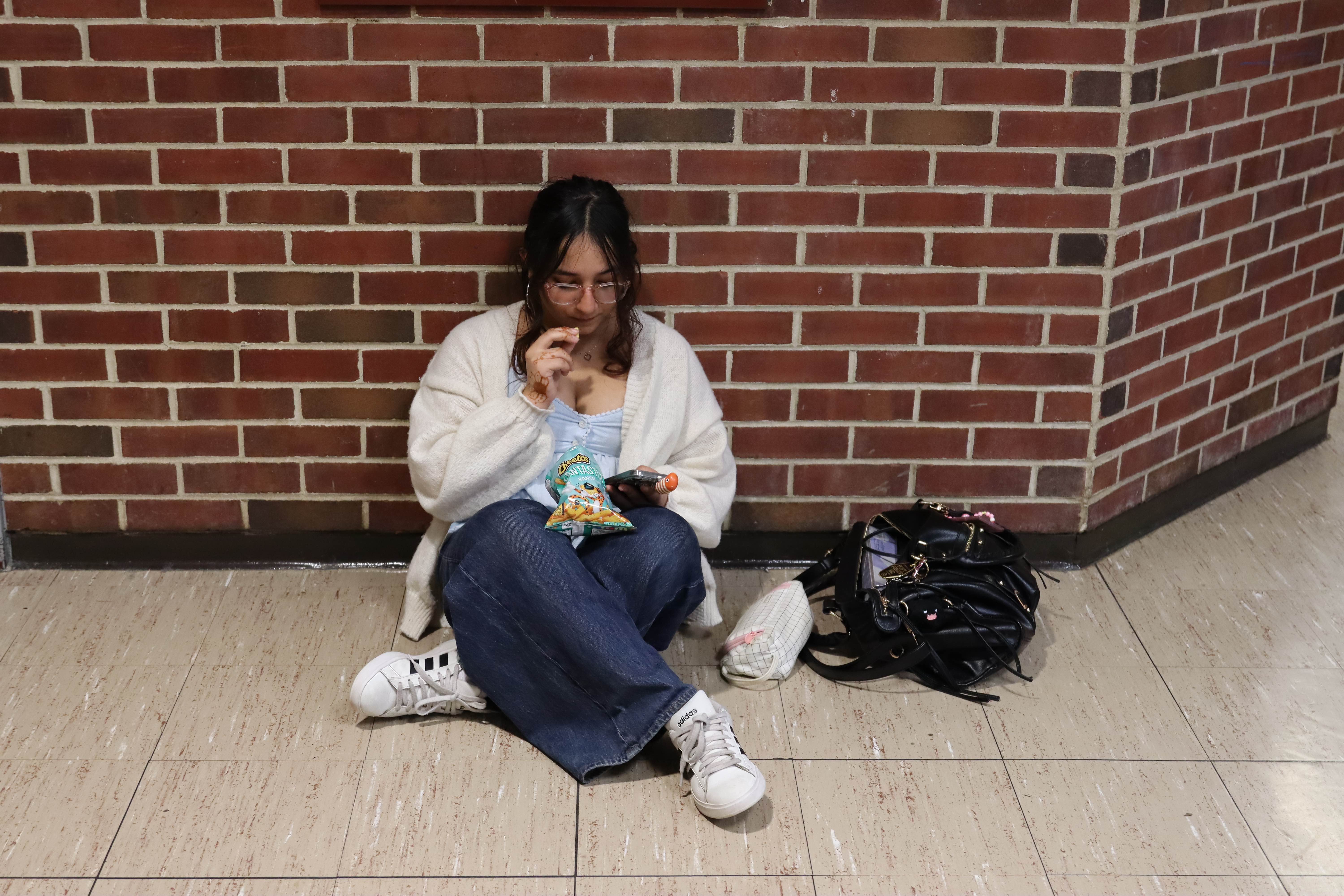Microplastics are a macro problem
April, 2025Walk into any grocery store in America, and you’re bound to find shelves full of ultra-processed foods wrapped in shiny plastic packaging. Ultra-processed goods, products that are prepared using industrial methods, are often high in sugar, salt, and fat. For these reasons, many health professionals and critics on social media have taken to advocating for consumption of “whole” foods such as fruits and vegetables. Although reaching for an apple is decidedly healthier than grabbing a bag of chips, both foods can be sources of a less-discussed health threat — microplastics.
Microplastics are defined as small pieces of plastic less than five millimeters long, and result from the natural degradation of plastic products, such as packaging, synthetic textiles, and paint. Since the coinage of the term “microplastics” in a 2004 University of Plymouth study, its negative effects on marine organisms have been well-established. However, microplastics aren’t just a problem for our environment — they have begun to find their way into the foods that we consume on a daily basis.
For example, a 2020 study by Catania University discovered that carrots and apples contained high levels of microplastics, likely due to absorption of microplastic-contaminated water. Additionally, according to a National Institutes of Health study from 2023, tea bags made with certain plastics can release billions of very small microplastics into cups of tea. Marine organisms consumed by humans can also have thousands of larger microplastics, and any foods stored in plastic containers contain thousands of plastic particles of all sizes. When consumed, these microplastics have been shown to mimic hormones, messenger chemicals within the body. One study from the American Chemical Society found that a gene called TRPV4 was over-expressed due to microplastics acting as growth factors, leading to respiratory issues. Microplastics can contribute to an increased risk of cancer, neurological diseases, and respiratory issues. They also exacerbate pre-existing medical issues, or activate latent disease-causing genes in the body.
In particular, many of the microplastics in humans arise from a process known as biomagnification. Because of pollution, there are many plastic particles floating in the ocean. Small organisms eat these plastics, and they are then consumed by predators. The plastics move up in the food chain, becoming more and more concentrated in the tissue of the apex predators. When a human proceeds to eat this animal, they receive a portion of the many microplastics present in the ocean. Biomagnification occurs in a similar sense for land animals like chickens and cows, which often consume contaminated plants. In all cases, the original source of microplastics are man-made materials that pollute the environment.
This is not a problem that can be solved through selection in what we eat, but instead needs to be solved at its origin. We fill our oceans with trash, destroying the single geographic feature that gave rise to all life. As a society, we need to change to save our planet, our oceans, our marine life, and ourselves. Large societal shift begins with small, personal steps. Right here at PHS, students can make a meaningful impact in the fight against microplastic pollution. From the cafeteria to the vending machines, we make daily choices that either contribute to or help combat this growing health and environmental crisis.
If you want to stay away from these life-threatening, cancer-causing particles, start by putting your water bottles in the recycling. The next time you go to the cafeteria or Tiger Café, choose items with less plastic packaging. Bring your own reusable water bottle instead of purchasing plastic beverage bottles from the vending machine. Even small changes like using your own reusable utensils or avoiding plastic straws count. These changes may seem insignificant, but together, we can reduce sources of microplastics that end up in our food, and in our bodies.
